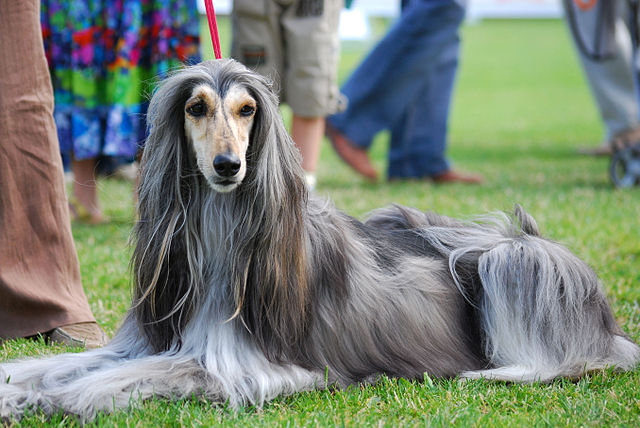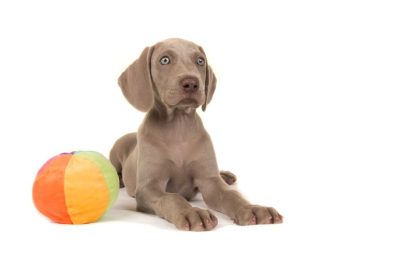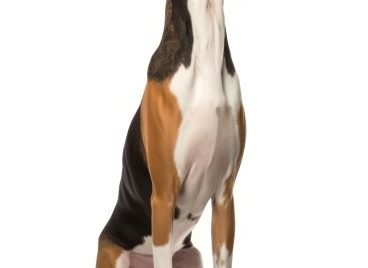Afghan Hound Breed Traits & Characteristics
As an enthusiast and advisor on breeds of large dogs, I would like to share some helpful suggestions and reasons regarding the traits and characteristics of the Afghan Hound breed. The Afghan Hound is a majestic and elegant dog with a unique set of qualities that make it a fascinating choice for dog lovers. In this article, we will explore the Afghan Hound’s history, physical appearance, temperament, exercise and training requirements, health considerations, living environment, socialization and compatibility, feeding and nutrition, as well as tips for finding a reputable breeder and adoption options. So, let’s dive into the world of Afghan Hounds!
Introduction
The Afghan Hound is an ancient breed that originated in the mountainous regions of Afghanistan. They were initially bred for hunting purposes, particularly for chasing down game in rugged terrains. Over time, their striking appearance and regal nature caught the attention of dog enthusiasts worldwide, leading to their recognition as a show dog breed. Today, Afghan Hounds are beloved companions known for their beauty and grace.
Brief History of the Afghan Hound
The Afghan Hound’s history can be traced back several thousand years, making it one of the oldest dog breeds in existence. These dogs were highly valued by Afghan tribes for their hunting skills and loyalty. The breed’s long and flowing coat served as protection against harsh climates, while their agile and swift nature made them exceptional hunters. Afghan Hounds eventually made their way to Europe and gained popularity as a show dog, captivating audiences with their ethereal beauty.
Physical Characteristics
Elegant Appearance
One of the most distinctive features of the Afghan Hound is its elegant appearance. With their long, silky hair flowing gracefully, they are often considered the epitome of beauty among dog breeds. Their slender and athletic build, combined with a regal posture, adds to their overall allure.
Long Coat and Grooming Needs
The Afghan Hound’s long and silky coat is undoubtedly one of its most striking features. However, it requires regular and intensive grooming to maintain its beauty. Daily brushing is essential to prevent matting and tangling of the hair. Additionally, periodic professional grooming is recommended to keep the coat in optimal condition.
Size and Weight
Afghan Hounds are large dogs with a height ranging from 25 to 27 inches at the shoulder. They typically weigh between 50 to 60 pounds. Their size, coupled with their graceful movements, gives them an impressive presence.
Temperament and Personality Traits
Independent Nature
Afghan Hounds are known for their independent nature. They possess a certain level of self-reliance and may not always display the same unwavering loyalty as some other breeds. This independence can be attributed to their history as hunting dogs, where they were required to make decisions on their own in the field.
Dignified and Aloof
The Afghan Hound carries an air of dignity and aloofness, which is part of their charm. They can be reserved with strangers and may not readily seek attention or affection from unfamiliar individuals. However, once they form a bond with their family, they can be incredibly loving and loyal.
Affectionate with Family
While Afghan Hounds may be aloof with strangers, they are generally affectionate and devoted to their family members. They thrive in a loving and nurturing environment where they can establish strong bonds. Spending quality time together and providing consistent care helps foster a deep connection with these majestic dogs.
Exercise and Training Requirements
Daily Exercise Needs
Despite their elegant appearance, Afghan Hounds have moderate exercise requirements. Daily walks and opportunities to stretch their legs in a securely fenced area are crucial to keep them physically and mentally stimulated. Engaging in activities that allow them to showcase their natural hunting instincts, such as lure coursing, can be particularly enjoyable for them.
Mental Stimulation
In addition to physical exercise, Afghan Hounds require mental stimulation to prevent boredom and destructive behaviors. Interactive toys, puzzle games, and obedience training sessions can help keep their minds active and engaged.
Training Challenges
Training Afghan Hounds can present some challenges due to their independent nature. They are intelligent dogs but may not always display a strong desire to please their owners. Patience, consistency, and positive reinforcement techniques are key when training Afghan Hounds.
Health Considerations
Common Health Issues
Like all dog breeds, Afghan Hounds are susceptible to certain health issues. Some common concerns include hip dysplasia, progressive retinal atrophy (PRA), and hypothyroidism. Regular veterinary check-ups and early detection of potential health problems are crucial for ensuring the well-being of Afghan Hounds.
Regular Vet Check-ups
Routine visits to the veterinarian are essential to monitor the Afghan Hound’s overall health and address any potential issues promptly.
Regular vaccinations, parasite prevention, dental care, and screenings for breed-specific health conditions should be part of the dog’s healthcare regimen.
Grooming for Skin and Coat Health
Proper grooming practices are essential to maintain the health of an Afghan Hound’s skin and coat. Regular brushing, bathing, and trimming of the nails are necessary. Additionally, attention should be given to the ears and eyes to prevent infections and irritations.
Living Environment
Space Requirements
Afghan Hounds are best suited for homes with ample space, ideally with access to a securely fenced yard. Their elegant and active nature benefits from having enough room to move around comfortably. Apartment living can be challenging for this breed unless sufficient exercise and mental stimulation are provided.
Fencing and Containment
Due to their hunting instincts and independent nature, Afghan Hounds should always be kept in a securely fenced area when outside. Their remarkable speed and agility make them capable of escaping if not properly contained. Fences should be high enough to prevent jumping and secure enough to withstand their strength.
Climate Considerations
Afghan Hounds have a long, thick coat that provides insulation in colder climates. However, they are susceptible to heat-related issues, particularly in hot and humid weather. Care should be taken to provide them with a cool and shaded environment during warmer months.
Socialization and Compatibility
Interaction with Children
Afghan Hounds can coexist well with children if properly socialized from an early age. Their gentle and tolerant nature makes them suitable for families with older children who understand how to interact respectfully with dogs. Supervision is always necessary to ensure that both the dog and the child are comfortable and safe.
Other Pets in the Household
With proper socialization, Afghan Hounds can live harmoniously with other pets in the household. However, their hunting instincts may be triggered by small animals, so caution should be exercised when introducing them to smaller pets such as cats or rabbits. Early socialization and gradual introductions are key to establishing positive relationships.
Supervised Off-Leash Activities
While Afghan Hounds have good recall skills, it is generally recommended to keep them on a leash or in a securely enclosed area. Their instinct to chase after small animals can sometimes override their recall training. Off-leash activities should always be supervised to prevent them from running off or getting into potentially dangerous situations.
Feeding and Nutrition
Dietary Requirements
A nutritious and balanced diet is crucial for the health and well-being of Afghan Hounds. High-quality dog food, formulated for their specific life stage and size, should be provided. Consultation with a veterinarian can help determine the appropriate portion sizes and specific dietary needs of your Afghan Hound.
Recommended Feeding Schedule
Establishing a consistent feeding schedule is important to prevent digestive issues and maintain a healthy weight. Feeding Afghan Hounds twice a day, dividing their daily portion into two meals, is generally recommended. Avoid overfeeding, as obesity can lead to various health problems.
Special Dietary Needs
Some Afghan Hounds may have specific dietary needs or sensitivities. It’s important to be aware of any allergies or food intolerances they may have and adjust their diet accordingly. Consultation with a veterinarian or canine nutritionist can provide valuable guidance in this regard.
Finding a Reputable Breeder
Research and Recommendations
When looking for an Afghan Hound breeder, thorough research and seeking recommendations from reputable sources are essential. Online platforms, breed-specific clubs, and dog shows can provide valuable information and contacts. It’s important to choose a breeder with a good reputation, who prioritizes the health and well-being of their dogs.
Questions to Ask Breeders
When interacting with breeders, be prepared to ask questions to ensure that they meet the necessary standards of responsible breeding.
Inquire about health testing of the parent dogs, the breeder’s experience and knowledge of the breed, and the conditions in which the puppies are raised. A responsible breeder will be transparent and open to answering all your queries.
Health Testing and Documentation
Reputable breeders prioritize the health of their dogs and will conduct appropriate health tests on the parent dogs to minimize the risk of genetic disorders. They will provide documentation of health clearances and other relevant certifications. Ask for these documents and review them carefully before making a decision.
Adoption and Rescue Options
Afghan Hound Rescue Organizations
Adopting an Afghan Hound from a rescue organization is a compassionate and fulfilling option. Rescue organizations specialize in finding loving homes for Afghan Hounds in need. They often provide comprehensive information about the dog’s personality, behavior, and health history, helping you make an informed decision.
Pros and Cons of Adoption
Adopting an Afghan Hound comes with its own set of pros and cons. On the positive side, you are giving a second chance to a dog in need and potentially saving a life. However, some rescued dogs may have unknown backgrounds or behavioral issues that require patience and understanding. It’s important to evaluate your readiness to handle potential challenges before adopting.
Transitioning to a New Home
When bringing a newly adopted Afghan Hound home, be prepared for an adjustment period. Set up a quiet and comfortable space for the dog, introduce them gradually to family members and other pets, and establish a routine. Patience, consistency, and positive reinforcement training will help ease the transition and build trust with your new companion.
Conclusion
In conclusion, the Afghan Hound is a breed that embodies beauty, elegance, and grace. Their independent nature, dignified demeanor, and unique physical characteristics make them a captivating choice for dog lovers. However, it’s important to understand their exercise and grooming requirements, temperament, and health considerations before welcoming an Afghan Hound into your home. Whether you choose to find a reputable breeder or opt for adoption, providing a loving and nurturing environment is crucial for the well-being and happiness of these majestic dogs.
FAQs
1: Are Afghan Hounds good family pets?
Yes, Afghan Hounds can make excellent family pets with proper socialization and training. They are affectionate and devoted to their families, although they may be aloof with strangers.
2: How often should I groom my Afghan Hound?
Afghan Hounds require regular grooming to maintain the health and beauty of their long coat. Daily brushing and periodic professional grooming are necessary to prevent matting and tangling.
3: Do Afghan Hounds get along well with other pets?
With proper socialization, Afghan Hounds can coexist well with other pets in the household. However, caution should be exercised when introducing them to smaller animals due to their hunting instincts.
4: Can Afghan Hounds be left alone for long periods?
Afghan Hounds are social dogs that thrive on human companionship. Leaving them alone for long periods can lead to boredom and separation anxiety. It’s important to provide them with mental stimulation and exercise and avoid extended periods of isolation.
5: What is the lifespan of an Afghan Hound?
The average lifespan of an Afghan Hound is around 12 to 14 years. However, with proper care, some Afghan Hounds can live even longer. Regular veterinary check-ups, a nutritious diet, and a healthy lifestyle contribute to their overall longevity.




